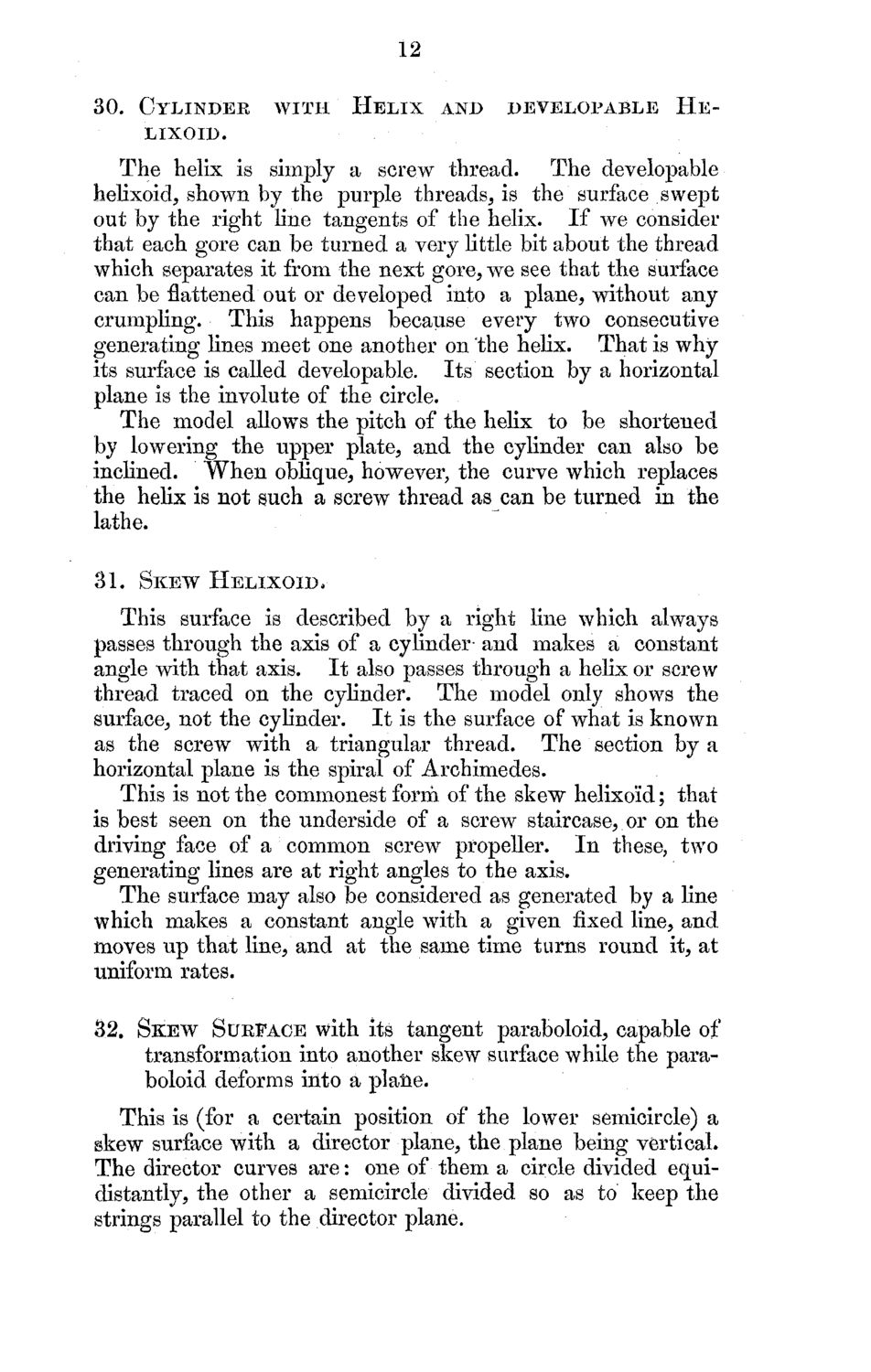| |
| |
Caption: Mathematical Models Catalog of a Collection of Models of Ruled Surfaces
This is a reduced-resolution page image for fast online browsing.

EXTRACTED TEXT FROM PAGE:
12 30. Cylinder with Helix and developable Helixoid. T h e helix is simply a screw thread. T h e developable helixoid, shown by the purple threads, is the surface swept out by the right line tangents of the helix. If w e consider that each gore can be turned a very little bit about the thread which separates it from the next gore, w e see that the surface can beflattenedout or developed into a plane, without any crumpling. This happens because every two consecutive generating lines meet one another on the helix. That is w h y its surface is called developable. Its section by a horizontal plane is the involute of the circle. T h e model allows the pitch of the helix to be shortened by lowering the upper plate, and the cylinder can also be inclined. W h e n oblique, however, the curve which replaces the helix is not such a screw thread as can be turned in the lathe. 31. Skew Helixoid* This surface is described by a right line which always passes through the axis of a cylinder and makes a constant angle with that axis. It also passes through a helix or screw thread traced on the cylinder. T h e model only shows the surface, not the cylinder. It is the surface of what is k n o w n as the screw with a triangular thread. T h e section by a horizontal plane is the spiral of Archimedes. This is not the commonest form of the skew helixoid; that is best seen on the underside of a screw staircase, or on the driving face of a c o m m o n screw propeller. In these, two generating lines are at right angles to the axis. T h e surface m a y also be considered as generated by a line which makes a constant angle with a given fixed line, and moves up that line, and at the same time turns round it, at uniform rates. 8.2. Skew Surface with its tangent paraboloid, capable of transformation into another skew surface while the paraboloid deforms into a plane. This is (for a certain position of the lower semicircle) a skew surface with a director plane, the plane being vertical. T h e director curves are: one of them a circle divided equidistantly, the other a semicircle divided so as to keep the strings parallel to the director plane.
| |